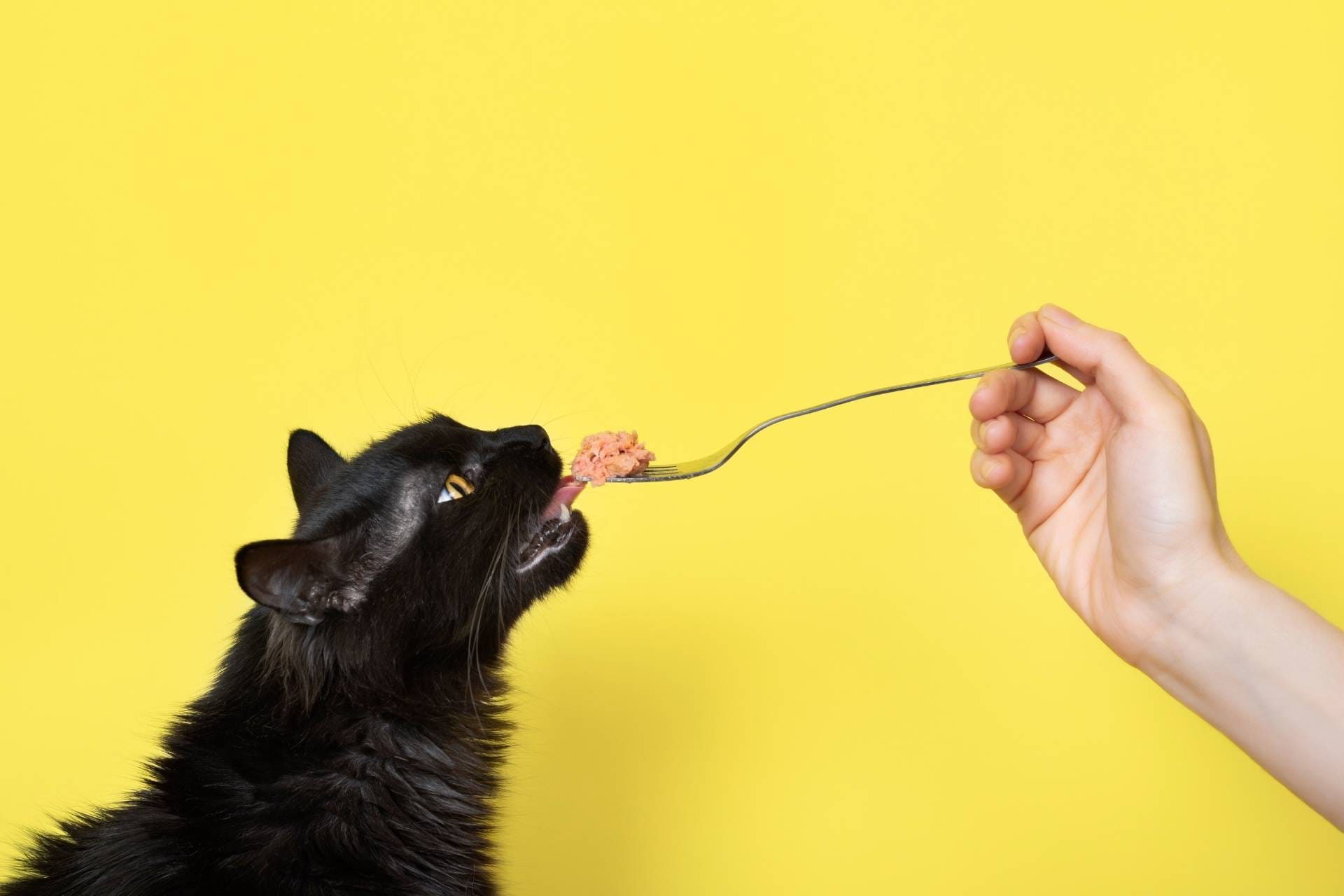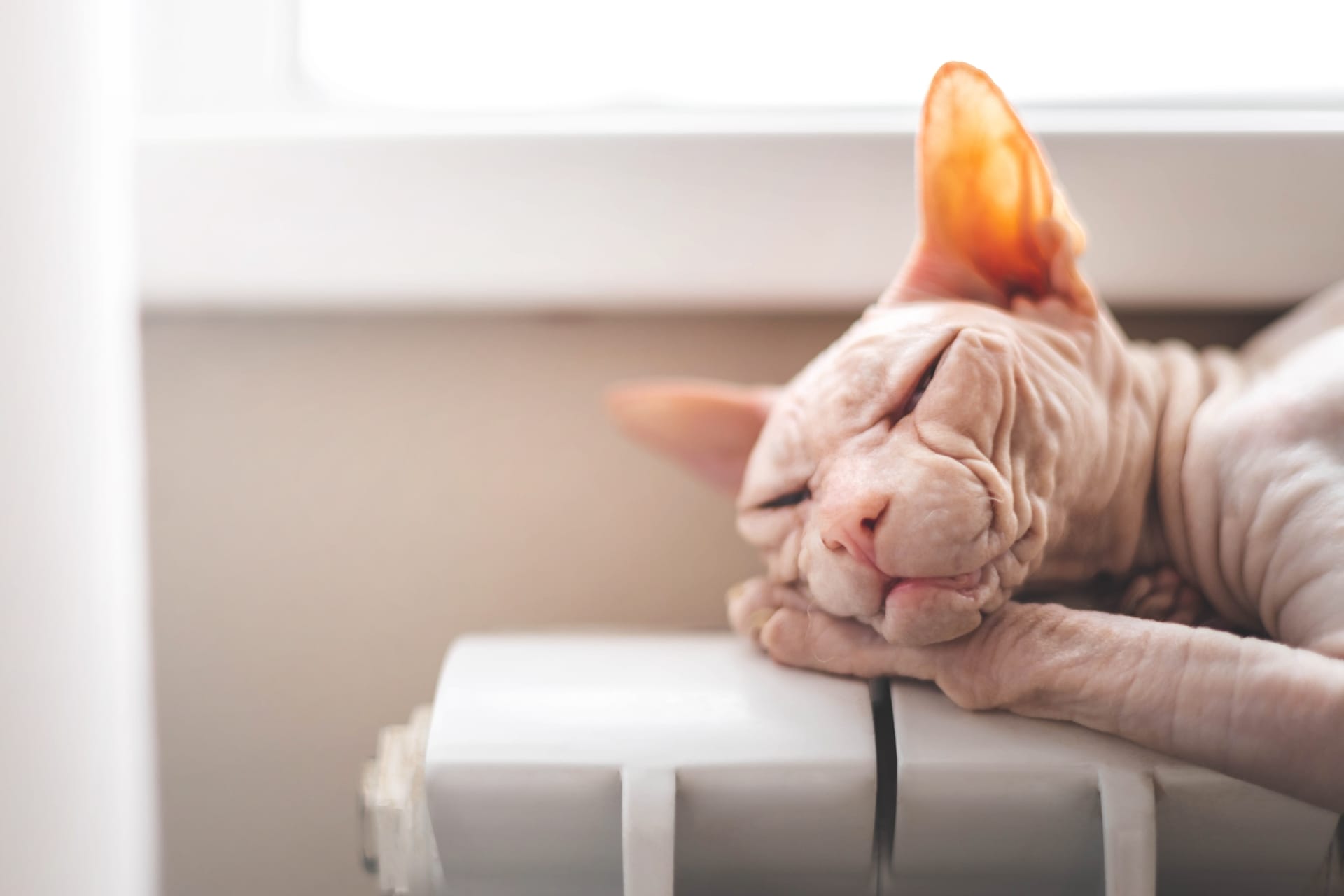Ever feel like your cat is giving you the “this is it?” look every time you serve their food? 😼 You’re not alone. In this article, we’ll show you how to combine wet and dry food to keep your cat happy and healthy.
The perfect mix for your cat
Combining wet and dry food isn’t just about variety. It’s about giving your cat a balanced diet full of benefits. And yes, we know you work for your cat (not the other way around), so let’s get straight to it. If your cat’s been having some… bathroom struggles, adding more wet food could help—check out our guide on dealing with a constipated cat for more tips to keep things moving smoothly.
Why should you combine wet and dry food?
Because, let’s face it, your cat deserves the best. Here’s why mixing wet and dry food is a brilliant idea.
Benefits of wet cat food
- Extra hydration: Cats aren’t always the best at drinking water, and wet food helps them stay hydrated.
- More appetizing and nutritious: The smell and texture are usually more appealing, which is great for picky eaters.
Benefits of dry cat food
- Dental health: Chewing dry kibble helps reduce plaque and tartar buildup.
- Convenience: You can leave it in the bowl without worrying about it going bad.
The ideal balance for complete nutrition
By combining wet and dry food, you ensure your cat gets all the nutrients they need, while you enjoy the satisfaction of seeing your cat happy and content. Win-win for both of you! 🎉
How much wet and dry food should your cat eat?
Here comes the million-dollar question: how much food should you serve without turning your cat into a little Garfield? 🐱 The right amount depends on a few factors: your cat’s weight, activity level, and age.
Factors to consider:
- Ideal weight: A 9-pound (4 kg) cat won’t eat the same as a 13-pound (6 kg) cat.
- Activity level: Is your cat a feline athlete or a professional napper?
- Age and breed: Kittens and more active breeds need more energy.
Recommended caloric intake for cats
Cats need about 50-60 kcal per kilogram (2.2 pounds) of their ideal weight per day. If your cat’s been spayed or neutered, aim for the lower end of that range (50 kcal per kg). For example, if your cat should weigh around 9 pounds (4 kg), they’d need about 200 kcal per day. If your cat’s on the chubby side and should weigh more like 11 pounds (5 kg), use that number to calculate their calorie needs.
Practical example for calculating portions of wet and dry food
Let’s say your 9-pound (4 kg) cat needs 200 kcal per day, and you want their diet to be 70% dry food and 30% wet food.
- Dry food: If the dry food has 350 kcal per 100 grams:
200 kcal × 70% = 140 kcal from dry food.
Convert that to grams:
Grams of dry food = (140 kcal ÷ 350 kcal) × 100 = 40 g
- Wet food: If the wet food has 80 kcal per can (85 grams):
200 kcal × 30% = 60 kcal from wet food.
Convert that to cans:
Cans of wet food = 60 kcal ÷ 80 kcal ≈ 0.75 cans
In summary, your 9-pound (4 kg) cat should eat around 40 grams of dry food and 3/4 of a can of wet food per day. 😸
Not a math person? No problem!
If calculating portions isn’t your strong suit, we’ve got you covered. Use our calculator below to figure out the exact portions of wet and dry food for your cat:
Adjusting dry food portions when adding wet food
We don’t want your cat needing a feline fitness plan, so let’s get the portions just right.
Do you need to cut back on dry food?
Yes! When you add wet food to your cat’s diet, you’ll need to reduce the dry food to keep them from gaining more weight than the cat version of Santa Claus after Christmas.
Calorie calculation to avoid overfeeding
Use the formula above to adjust the total calories and keep your cat fit.
How to split daily meals
Here’s an easy plan for portioning out your cat’s meals throughout the day:
- Morning: 28 g of dry food.
- Afternoon: 1 can of wet food.
- Night: 28 g of dry food.
This way, your cat gets variety, and you get peace of mind. 🐾
Your inbox needs this
Subscribe to the Petme newsletter for weekly updates with pet care tips, tales, and member-only perks.

Healthy alternatives: what’s the best wet food to pair with kibble?
Not all wet foods are created equal, so here are some tips to help you choose the right one.
Choosing quality wet food
- Natural ingredients: Look for wet food with real meat and no by-products.
- No artificial preservatives: Less is more.
Complete vs. complementary wet food
- Complete: Provides all the necessary nutrients.
- Complementary: Use it as a treat or add-on, not the main part of the diet.
For the best balance with dry kibble, choose complete wet food.
How often should you feed wet food?
Once a day is perfect. Your cat gets their gourmet moment without disrupting their overall diet.
FAQs about combining wet and dry food for cats
Because we know you’ve still got questions, here are some answers.
Can I leave dry food out all day if I give wet food in the morning?
Sure! Just make sure to adjust the total amount so your cat doesn’t overeat. Remember, your cat is the real snack master.
Does this combo affect my cat’s dental health?
Dry food helps keep their teeth clean. Combining both still benefits their dental health. Just don’t skip those vet check-ups.
Do I need to change the food as my cat gets older?
Yes, kittens, adults, and seniors have different needs. Adjust their diet based on their life stage.
Can I mix wet and dry food in the same bowl?
You can, but some cats prefer them separate. You know how picky they can be.
What if my cat doesn’t want to eat wet food?
Patience! Introduce wet food slowly and try different flavors. Sometimes it takes a little time for them to get used to it.
Conclusion: the benefits of a mixed diet for your cat’s health
Combining wet and dry food is the best of both worlds. You’re giving your cat a balanced diet, keeping them hydrated, and taking care of their dental health. Plus, they’ll be happy, and you’ll be their favorite human (at least for the day).
Speaking of keeping your cat happy, have you heard about Petme? It’s the social network where your pet could be the next big star. Because let’s face it, your cat deserves more followers than you!












Join the discussion 3 Comments